Types and varieties of lilac
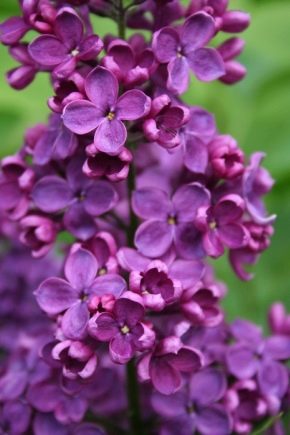
Lilac is one of the most abundant shrubs in gardens, albeit somewhat crowded out by other plants. However, the choice of its varieties is very difficult.

Species, varieties and their characteristics
Starting a conversation about the varieties of lilac, it should be mentioned that this culture is distinguished by lush and bright flowers, a pleasant smell. There are 30 types of cultivated shrubs known. However, the following varieties of lilacs are most often grown in gardens:
- Chinese;
- ordinary;
- Amur;
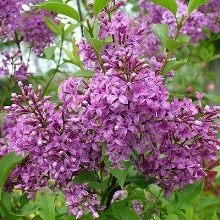


- Hungarian;
- Himalayan;
- Persian.
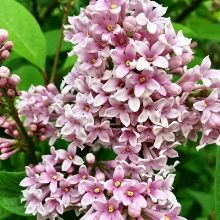
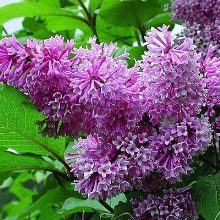

In addition to these groups, bred by professional breeders, wild-growing subspecies are also common. It is not necessary to familiarize yourself with the botanical description and scrupulously study each species in order to get a complete understanding of the culture. It is enough to look at the photographs - it will immediately become clear how beautiful it is. For example, Meyer's lilac cannot boast of a particularly large growth. But it blooms twice with the formation of a mass of pink-purple inflorescences. It is noted that such a plant gives a persistent sweetish aroma. Growth in 12 months in favorable conditions can reach 10 cm. The shrub is not damaged by frost, loves sunlight. The maximum height is 120 cm. The appearance is attractive with any number of specimens planted next to it.
Among the best varieties, one can confidently name "Monge"... The culture is considered a worthy choice for decorating garden landscapes. When flowering, many purple inflorescences with a red tint are formed. Even strong sunlight will not damage the bush.
Another attractive feature of "Monge" is its compactness: the growth of an adult plant reaches 260 cm.
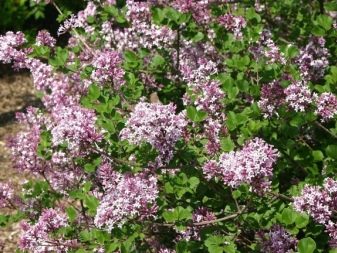
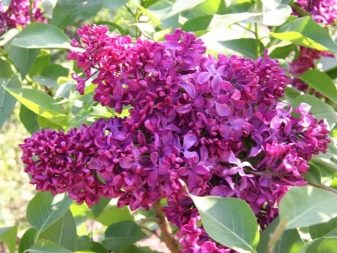
A good result can give "Captain Balte"... This is a wide, squat plant, the inflorescences of which are splendid. They are painted in a lilac-pink tone, in which the experienced eye catches a bluish tint. The variety is not too whimsical, it gives a powerful aroma. In spring, the shrub is covered with wide dark green foliage. An attractive appearance is also characteristic of the variety. "Aucubafolia"... Its flowers are painted in a lilac-lilac tone. Light streaks on bright foliage appeal to a wide variety of observers. The original feature of the appearance of this culture is yellow stripes and spots of the same color scattered on the leaves. "Aucubafolia" grows to great heights.
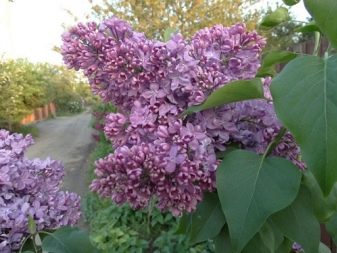
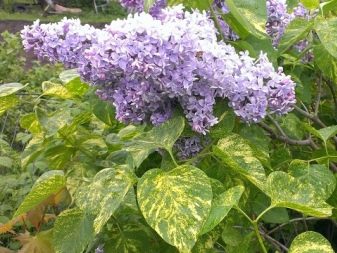
Kolesnikov Olympics produces flowers of delicate lilac color. They seem to twist in opposite directions. The buds are darker than the flowers. The flowering period is very long. The height of the lilac reaches 3 m, sometimes a little more. Have "Dawn of communism" large, heavy inflorescences are formed. They are popular with people due to their delicate mix of reds, purples and purples. Shrubs of this type do not grow to more than 2 m. The flower petals resemble screws. When flowering is over, they bend over. Flowers at the "Zarya Kommunizma" are formed in the 4th year of development. They can be both simple and terry, they have various subtle shades. Very good results are obtained on slightly acidic or neutral ground. The level of groundwater is also of great importance.
The main application is the formation of garden compositions.
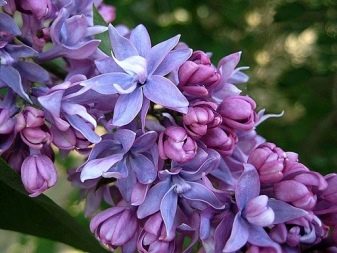
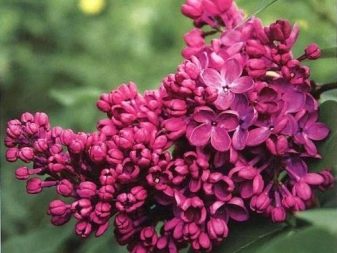
Variety "Ludwig Shpet" - or, otherwise, "In memory of Ludwig Shpet" - forms buds of dark purple color with a purple tint.Flowers are colored in about the same, their cross section reaches 2.6 cm. The scent is quite attractive. The shrubs at Shpet bloom profusely, but late, grow tall and straight. A good alternative can be considered a sprawling Michelle Buchner... Terry flowers smell strong. Around the middle of the flower, the color is slightly lighter. The petals are slightly pointed. The annual growth of "Buchner" reaches 20 cm. It is worth remembering that such a culture does not develop well on acidic soil, in the lowlands.
The variety grows best in a sunny area. But the resistance to cold and heat is very high.

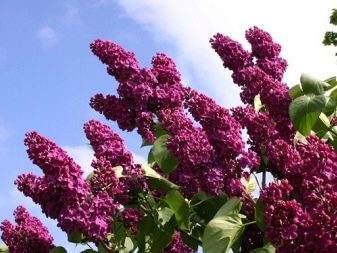
It is useful to pay attention to "Lights of Donbass"... This variety is covered in purple-lilac flowers in the spring that do not fade in the sun. "Schoolgirl" can hardly be called a new variety of lilacs. It was bred in our country back in the mid-1950s. The bush blooms very powerfully, throwing out pyramidal inflorescences. The "Schoolgirl" crown resembles a ball made of green leaves. According to reviews, the culture gives excellent results when landscaping gardens.
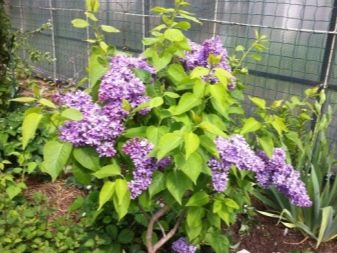
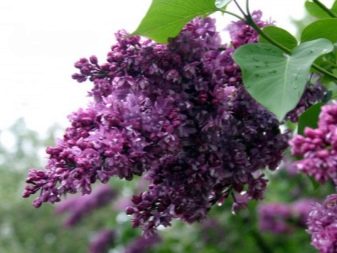
7 years earlier appeared "Madame Charles Suchet"... At the peak of the season, the bushes of this variety are relatively low. They are covered with inflorescences of a light purple hue. Consumers note that, compared to other types of common lilac, it has a noticeably stronger aroma. And flowering occurs as abundantly as possible, which dramatically increases the popularity of the culture among gardeners.
In 2011, an original and modern variety was introduced: "Federico Garcia Lorca"... It was created not in Spain, but in our country at the Timiryazev Academy. This lilac forms bushes up to 240-270 cm high. The width of the shrub is 130 to 150 cm. The size of the leaves is moderately large, they have a dull tint. The branches of "Lorka" are red-brown, and the inflorescences are moderately dense and colored in various colors. There are blue, pink, yellow and purple flowers. The bud is always brown, but on closer inspection, it is easy to notice the greenish notes.
Both buds and flowers tolerate frost well in late spring.


A good option in many cases is "Bohdan Khmelnytsky"... This variety of common lilac has strong, smooth leaves that are shaped like a heart. Flowers of this culture smell very strong. They are concentrated in pyramidal inflorescences. Flowering begins at the 4th year of development. The variety can hardly be called new: it received the highest award at the 1975 international floriculture exhibition. But over the past decades, his appearance has remained no less attractive. The pink flowers have showy, slightly white tips. Thanks to the sparseness of the inflorescences, any bud can be easily seen. Bogdan Khmelnitsky can grow both in the sun and in partial shade. The soil requirements are strict, but quite feasible even for inexperienced gardeners. The land must be fertile and well-drained. It is necessary to provide an increased humus content. In order for lilac to develop normally, it is planted only where the groundwater is deep.
The preferred area of application of "Bogdan Khmelnitsky" is a variety of decorative compositions.

On this variety, deservedly recognized as one of the best examples of domestic breeding, the choice does not end there. Varietal Japanese lilac in many cases is no worse. In cultural agriculture, this variety has been used since the last quarter of the 19th century. Under natural conditions, Japanese lilacs can grow up to 20, even up to 25 m. The size of its foliage is 15x9 cm, and rounded inflorescences grow up to 30x20 cm. In central Russia, such indicators cannot be achieved. However, even here the Japanese lilac will look extremely attractive. In gardens, a large (5 or 6 m) shrub with slightly reddish branches in a rounded crown immediately attracts attention.It is worth considering that the bark of old shoots may flake off. Leaves of a pointed ovoid shape are clearly divided into two color areas: light below, and more saturated tones on top.
The flowers are creamy with a white tint and give off a thick honey scent. This plant differs from the biologically close Amur lilac in a smaller size of flowers and shortened filaments of stamens. In the vicinity of the Russian capital, the Japanese subspecies enters the flowering phase in July. The delay in comparison with the related Amur lilac is fully justified by the longer flowering period. And also, importantly, the plant produces more flowers.

But we must also take into account the partial disadvantages of the variety. Due to the natural development on the Japanese Islands, such a culture may not survive the most severe winters, even in the middle lane. The defeat of annual increments is especially likely. It is not worthwhile, however, to absolutize these weaknesses. In a normal situation, when the frost is not too severe, and the snow cover is sufficient, you can get brilliant results.
Listing the varieties of lilac separately does not allow you to answer exactly which are the most beautiful of them. The subjective approach of each gardener when answering such a question is obvious. Usually called "Beauty of Moscow", "Maiden's Blush"... This is not surprising: the "ugly" lilac does not exist in reality, there is just a serious difference between its groups. Of course, proper care and adherence to the elementary rules of agronomy are of great importance. If you look into the botanical gardens, it becomes clear: both "world leaders" and those varieties that many gardeners are skeptical about look great there. The correct selection of the landscape plays a role, if necessary - its improvement.
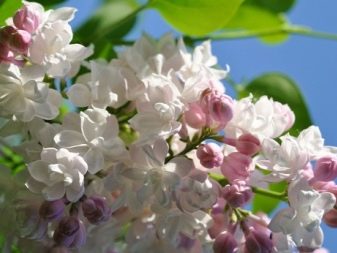
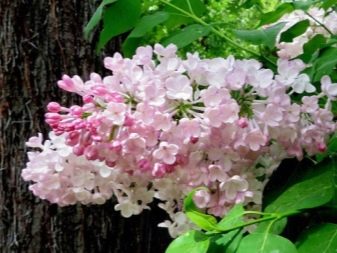
Nevertheless, let's try to point out unusual, especially attractive varieties. "White Night" develops well even with a sharp change from rainy, cold weather to extreme heat. In such a situation, inflorescences painted in dark tones shed, and it becomes impossible to recognize them from literary descriptions.
Important: in such cases, they show themselves just as well:
- Madame Charles Suchet;
- "Hydrangea";
- "Dream".
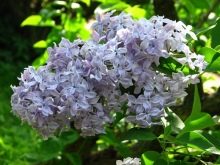
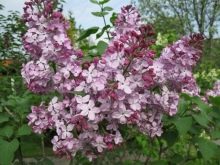
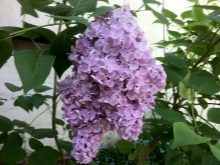
When, due to a protracted spring, flowering is delayed for a long time, even blue and pink plants become bright. Gardeners can also benefit from such unfavorable weather, focusing on the brightest, most saturated colors of the violet and purple parts of the spectrum. Lilac will look beautiful "Thunberg"which is covered with large purple flowers. They have a slight bluish tint. The pointed parts of the petals are bent inward. Large inflorescences look very unusual on a compact shrub. The late flowering period allows you to avoid many negative phenomena, including freezing when the cold weather returns.
Quite good aesthetic qualities are characteristic of Captain Perrault... The variety, bred by the famous Lemoine, produces large flowers of a light pink color. A faint mallow tone is mixed with the main color. Although the inflorescences look dense, they are not very strong. Therefore, you need to be more careful with Captain Perrault. By the 10th year of development, the height of the bushes will not exceed 2 m. They are also compact in width. As a result, this variety can be safely recommended for owners of small gardens.
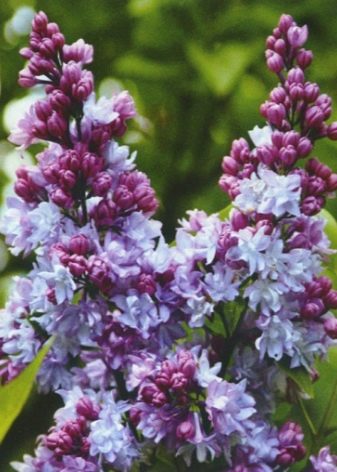
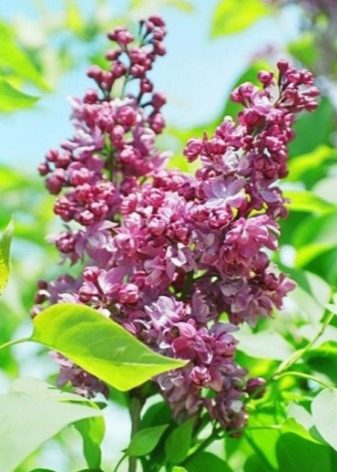
Another attractive French variety is "Georges Claude"... During flowering, lilacs are covered with large symmetrically spaced buds. They will look most beautiful in the evening hours. The height of the bushes is relatively low. From early flowering varieties, it is recommended to grow "Poltava"... She has large flowers with bucket-shaped petals. Importantly, flowering occurs as abundantly as possible. Shrubs of "Poltava" rise up to 2.5 m in height. And they take up a lot of space in width, which makes them a worthy choice for a large garden.
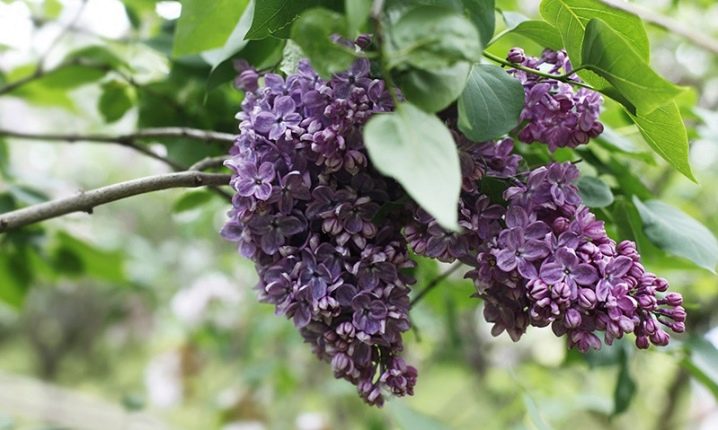
Another attractive option among early flowering shrubs is "Fantasy"... Large purple buds, when opened, become double purple-pink flowers. When flowering is complete, they gradually turn white. The density of the inflorescences is so high that it is difficult to see individual flowers at Fantasy.
And you can also recommend:
- Swarthmore;
- Mount Baker;
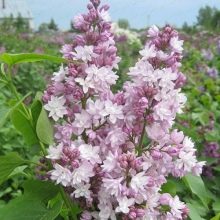
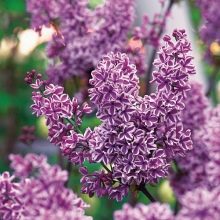
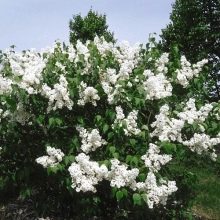
- "Temptation";
- "Pom Pom".
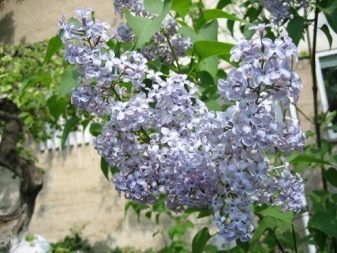

How to choose?
Many varieties of lilac are cultivated in Russia. But not all samples are suitable for the Moscow region. These include Captain Balte. Among the varieties of domestic selection, an attractive choice is "Pavlinka"... For more than half a century of cultivation, this crop has proven its vitality and aesthetic appeal. The shrub grows to medium size. During flowering, it becomes covered with purple-purple inflorescences. "Pavlinka" tolerates even rather harsh winters. An important condition for its full development is intensive lighting of the site.
Lush flowering allows you to use this variety to plant greenery and create hedges.
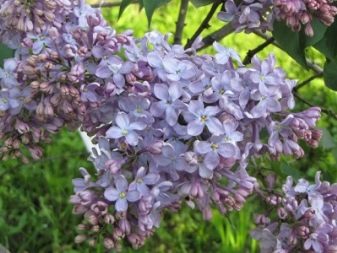

A good substitute for this type of lilac can be "President Poincaré"... But we must remember that its bushes are very high (they grow up to 4, sometimes up to 6 m). Pyramidal inflorescences are characterized by increased density. And another variety recommended for the Moscow region - "Monique Lemoine" - does not grow more than 2 m in height. However, this does not prevent him from entering the seven best world varieties.
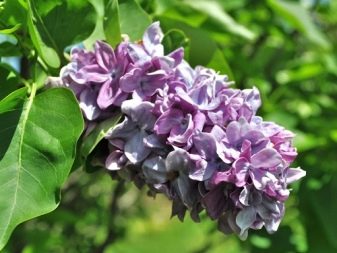
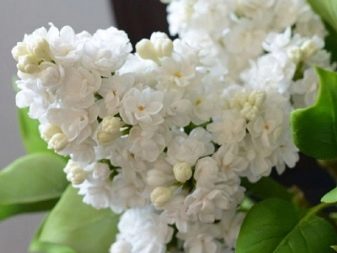
"Beauty Moscow", derived by the legendary Kolesnikov, also deserves a separate discussion. The amazing pink buds that gradually turn into snow-white flowers will certainly appeal to gardeners. An equally attractive plant turns out to be Galina Ulanova... Its inflorescences, for all their external splendor, are perceived as weightless structures. But completely new varieties, bred literally in recent years, deserve attention.
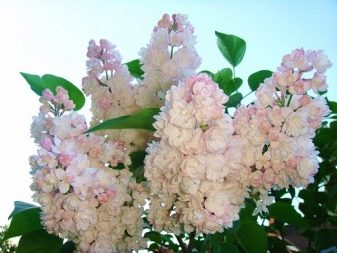

More traditional varieties are worth choosing "Red Moscow"... The plant stands out for its extremely powerful purple color. Dark flowers with a diameter of 2 cm exude a very strong aroma. Most inflorescences are formed from a pair of panicles. Most importantly, the color of the flowers is very persistent. Flowering is moderate. "Krasnaya Moskva", along with excellent aesthetic parameters, is becoming an excellent honey plant. Pollination improves in areas where it grows. Like other varieties of lilacs, this one cannot be grown in low-lying, flooded areas. Annual or slightly more frequent pruning is recommended.
This will increase the size of the shrub and make it more attractive.
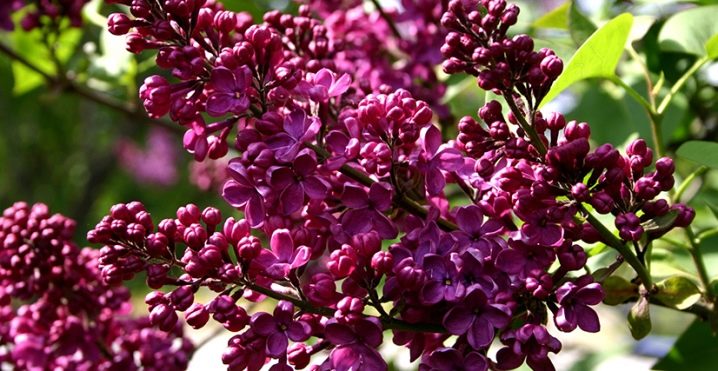
Interesting ideas for landscape design
Choosing lilac varieties suitable for Russian gardens, you may not get the optimal result. The fact is that each plant must be applied taking into account aesthetic requirements and nuances. A good solution is to form a lilac hedge. The uniform white color of the flowers is not always pleasant and interesting. A combination of colors of different colors will look much more spectacular.
Important: only varieties of approximately the same height should be introduced into the hedge. A good step is planting lilacs along with other ornamental shrubs. It goes very well with mock-orange. As soon as the flowers fall off the lilac bush, they begin to form on the mock-orange. If a local group of shrubs is created, you can limit yourself to planting one variety of lilacs.
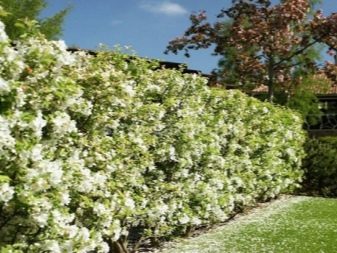
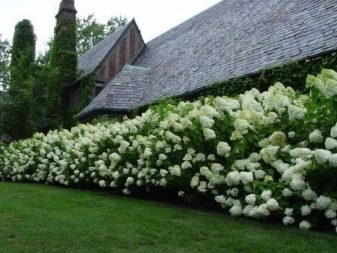
The choice of varieties is determined by those considerations that are important to the gardener. For decoration purposes, they use simultaneously flowering species. But when getting bouquets is in the foreground, it is advisable to use varieties of different flowering times. Lilac blooming in autumn will saturate the home atmosphere with pleasant aromas.Sprawling bushes help both fill in empty corners and cover up poor looking garden structures.
It is a good idea to cover up your barbecue, patio, or other recreational areas from nearby views. But I must also say about the use of lilac in the "solo" planting. In this case, a single bush is planted near the lawn or next to the wall of the house. For the best effect, choose a plant that looks flawless.
Attention should be paid to pruning: the slightest mistake in the formation of the crown will result in serious aesthetic consequences.
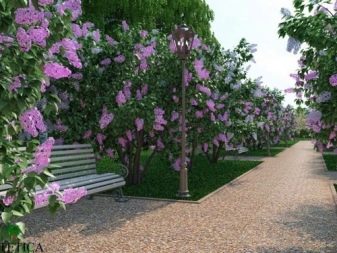
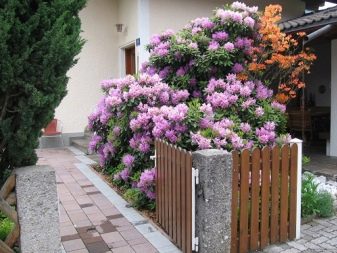
Standard plants are ideal for single planting. The top of them will have to be thinned out from time to time. A good idea would be a monochrome garden, in which the lilac will become a "trendsetter". If the bushes are painted in purple tones, you can combine them with plants that are covered with lilac-lilac flowers.
Optimal combinations give:
- sage;
- hydrangea;
- iris;
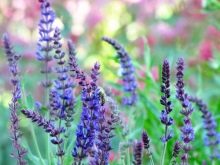
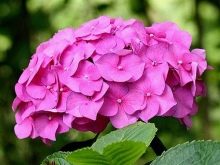
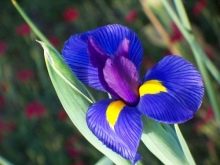
- verbena;
- rhododendron;
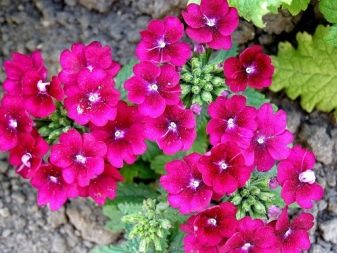
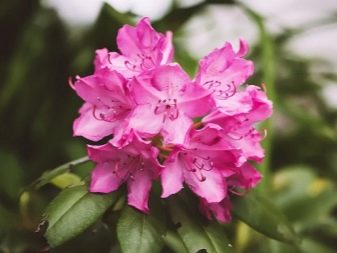
- heliotrope;
- phlox.
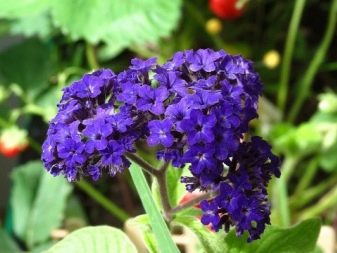

Important: you cannot chase the excessive saturation of the ensemble. It is overly visually tiring. Let it be better to have 2 or 3 plants in a bunch, and they will reveal their aesthetic characteristics as fully as possible. A monochrome white garden along with lilac bushes can also look brilliant.
They plant next to them:
- lilies of the valley;
- jasmine;
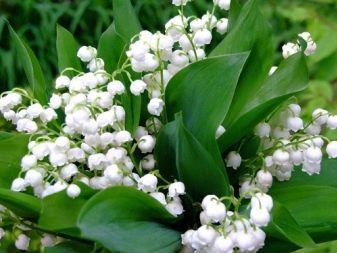
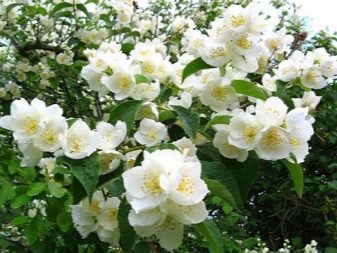
- snowdrops;
- daffodils;
- chamomile.

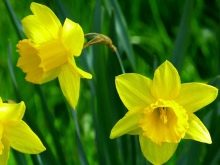
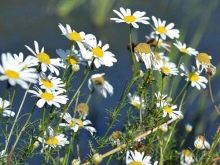
Lilac will look spectacular next to a tree: for example, with junipers and thujas, with small pines. Some people have a preference for bulbous crops, which do not have to be dug up regularly. To exclude mistakes, it is enough to think in advance whether the colors of the selected plants and their flowers are combined with each other. Lilac gives an attractive combination with asters, zinnias and lilies. An original color composition can be created using almonds, yellow acacias, spirea.
Tenacious, primrose, periwinkle will effectively fill empty spaces under wide bushes. In decorative style gardens, privet, barberry and elderberry should be used together with lilacs. If you need a soft color, you need to use willow, elk and various conifers. With their help, it is possible to disguise bad-looking structures.
But it is important to remember that lilac develops extremely poorly if there are:
- plums;
- cherries;
- apple trees;
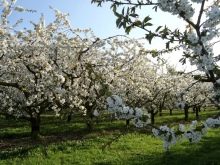

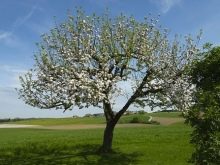
- dahlias;
- gladioli;
- currant bushes.
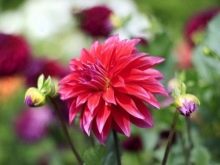
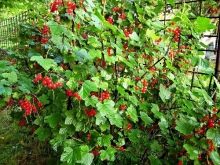
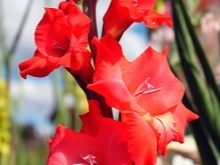
It would be a bad idea to combine lilacs with their wild ancestors. You can also not combine it with too large plants: the effect of visual suppression will appear. Lilac bushes will look bad next to a pond or lake. But in parks and gardens of a regular style, it is advisable to simply plant shrubs evenly along long alleys or paths. Experts advise to do single-row planting: two rows drastically reduce the ventilation of plants and their illumination. A regular garden allows you to use standard and bush varieties of lilacs equally effectively. In combination with wildflowers and decorative flowers, lilac bushes should be used in as much as possible so that they visually dominate.
Comparatively small varieties look good in the following locations:
- in rockeries;
- in a rocky garden;
- on an alpine slide.


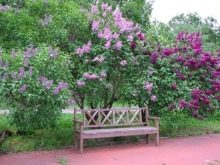
You can find out the secrets of breeding and caring for lilacs by watching the video below.



































































The comment was sent successfully.